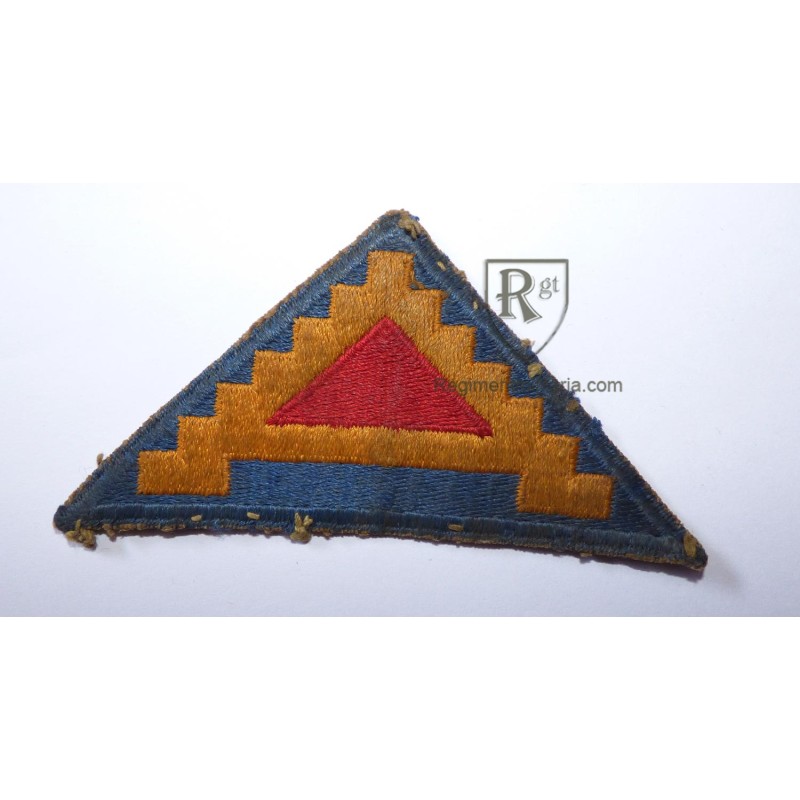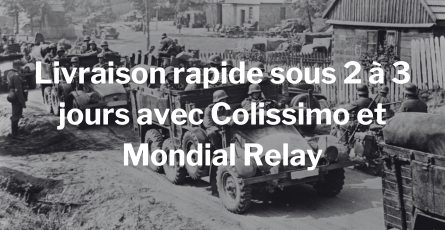

Banner

Banner




7th ARMY worn Patch.
 Garanties sécurité
Garanties sécurité
(à modifier dans le module "Réassurance")
 Politique de livraison
Politique de livraison
(à modifier dans le module "Réassurance")
 Politique retours
Politique retours
(à modifier dans le module "Réassurance")
7th ARMY Patch (Seven Steps to Hell). original, WW2, cut edge, white back. The I Armored Corps, the predecessor of Seventh Army, was formed on 15 July 1940 as the command element for armored forces of the United States Army. Its first commander was Major General Adna R. Chaffee, Jr., followed by Major General Charles L. Scott in November 1940. The United States officially entered World War II on 7 December 1941, after the Japanese attack on Pearl Harbor. This was followed four days later by the German declaration of war on the United States. With the goal of stopping German expansion in Europe and Africa, it was decided that the first operation for United States Army forces would be to assist the British in driving German forces from North Africa. On 15 January 1942, Major General George S. Patton Jr. assume command of I Armored Corps and began planning for the invasion of North Africa. On 8 November 1942, General Patton was in command of the Western Task Force (a temporary redesignation of I Armored Corps for tactical deception), the only all-American force landing for Operation Torch, code name for the Allied invasion of French North Africa. I Armored Corps then began to drive east which complemented British forces driving from the west. The result was that Axis forces were trapped in Tunisia and were forced to surrender in May 1943. Sicily After succeeding in North Africa, Patton, now promoted to the rank of Lieutenant General, became commander of the newly formed Seventh Army, which was formed at midnight on 10 July 1943 by the redesignation of the I Armored Corps. The Allied invasion of Sicily in July 1943, was conducted in conjunction with the British Eighth Army, commanded by General Sir Bernard Montgomery, Patton's rival. Patton commanded the Seventh Army until early 1944. The Seventh Army landed on several beaches in southern Sicily on 10 July 1943 and captured the Sicilian capital of Palermo on 22 July and, along with the British Eighth Army, captured Messina on 16 August. During the fighting, the elements of the Seventh Army killed or captured thousands of enemy soldiers, mainly Italians. During the operation the Seventh and Eighth Armies came under the command of the 15th Army Group, under General Sir Harold Alexander. The headquarters of the Seventh Army remained relatively inactive at Palermo, Sicily, and Algiers until January 1944, when Lieutenant General Mark W. Clark, then commanding the U.S. Fifth Army on the Italian Front, was assigned as commander and the Seventh Army began planning for the invasion of southern France. The invasion was originally given the code name of "Operation Anvil", but was changed to "Operation Dragoon" before the landing. In March 1944, Major General Alexander Patch, a highly experienced and competent commander, was assigned to command the Seventh Army, which moved to Naples, Italy, the following July. On 15 August 1944, elements of the Seventh Army assaulted the beaches of southern France in the St. Tropez and St. Raphael area. (Patch was promoted to Lieutenant General three days later.) On 15 September, the Seventh was put under the field control of the 6th Army Group, under Lieutenant General Jacob L. Devers. The 6th Army Group also included the French First Army. Within one month, the Seventh Army, which by then employed three American divisions, five French divisions and the 1st Airborne Task Force, had advanced 400 miles and joined with the Allied forces coming south from Normandy. In the process, the Seventh Army had liberated Marseilles, Lyon, Toulon and all of Southern France. The Seventh Army then assaulted the German forces in the Vosges Mountains and broke into the Alsatian Plain. During the Battle of the Bulge in late December, it extended its flanks to take over much of the area that had been the responsibility of U.S. Third Army, then commanded by Patton who had previously commanded the Seventh, which allowed the Third to relieve surrounded American forces besieged at Bastogne. In mid-January 1945, the Seventh engaged in pitched battle seeking to regain ground lost to Germany's Operation Nordwind New Year's offensive. Along with the French First Army, the Seventh went on the offensive in February 1945 and eliminated the Colmar Pocket. After capturing the city of Strasbourg, the Seventh went into the Saar, assaulted the Siegfried Line, and reached the River Rhine during the first week of March, 1945. In a lead role in Operation Undertone, the Seventh Army fought its way across the Rhine into Germany, captured Nuremberg and then Munich. Finally it crossed the Brenner Pass and made contact with Lieutenant General Lucian Truscott's U.S. Fifth Army at Vipiteno[1] – once again on Italian soil. In less than nine months of continuous fighting, the Seventh Army had advanced over 1,000 miles and for varying times had commanded 24 U.S. and Allied divisions, including the 3rd, 36th, 42nd, 44th, 45th, 63rd, 70th, 100th, and 103rd Infantry Divisions.
Reference: A2E1284
Reference: U2E581
Reference: IND276
Reference: ALG158
Reference: A2E1326
Reference: U2E654
Reference: F2E506

7th ARMY worn Patch.
check_circle
check_circle